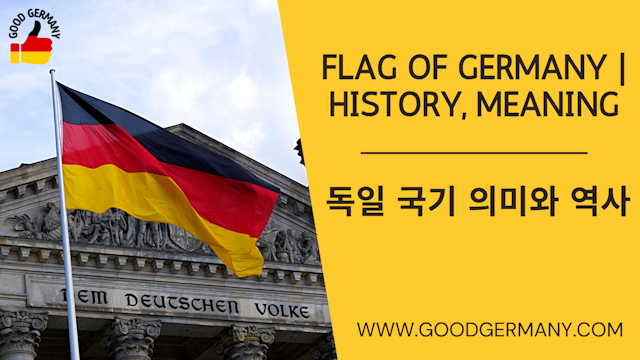Flag of Germany | History, Meaning
2023-12-03

Germany, a nation steeped in history, boasts a flag that represents its journey through time. In this article, we delve into the intricate details of the Flag of Germany, exploring its profound meaning and tracing its evolution through the annals of history.
Flag of Germany: A Symbol of Unity and Identity
Germany's national flag, Flag of Germany, consists of three horizontal stripes—black at the top, red in the middle, and gold at the bottom. Each color holds a symbolic representation, crafting a narrative of unity and identity.
Black: Strength and Determination
The black stripe signifies the strength and determination of the German people. It embodies the resilience that has been a cornerstone of the nation's character throughout its history.
Red: Hard-fought Freedom
The red stripe represents the hard-fought freedom and the sacrifices made to achieve it. It serves as a poignant reminder of the challenges overcome on the path to a united and free Germany.
Gold: Bright Hope for the Future
At the bottom, the gold stripe symbolizes the bright hope for the future. It reflects the optimism and prosperity that the nation aspires to achieve and maintain.
Historical Evolution of the Flag of Germany
The history of the Flag of Germany is intertwined with Germany's tumultuous past. Understanding its evolution provides insight into the nation's transformative journey.
Early Inspirations
The concept of a tricolored flag dates back to the early 19th century, drawing inspiration from the revolutionary ideals of the time. However, it wasn't until the formation of the German Empire in 1871 that a definitive national flag was adopted.
Weimar Republic and the Swastika
The period of the Weimar Republic saw the introduction of the black-red-gold tricolor. Unfortunately, during the dark days of the Nazi regime, the flag was replaced by the infamous swastika.
Rebirth and Reunification
After World War II, Germany underwent a process of rebirth. The modern Flag of Germany, with its iconic black-red-gold design, was officially reintroduced in 1949. The reunification of East and West Germany in 1990 solidified the flag's status as a symbol of unity.
5 F&Q
What is the significance of the black color in the Flag of Germany?
The black color in Flag of Germany symbolizes the strength and determination of the German people. It reflects their resilience in the face of challenges.
Why was the swastika used in Germany's flag?
During the Nazi regime, the swastika replaced the traditional Flag of Germany. It was a dark period in Germany's history, and the swastika symbolized the oppressive ideology of the time.
How did the current German flag evolve?
The current Flag of Germany, with its black-red-gold design, evolved after World War II. It was officially reintroduced in 1949, symbolizing Germany's rebirth and later reunification in 1990.
Is the German flag design unique?
Yes, the design of Flag of Germanyis unique with its horizontal tricolor of black, red, and gold. It stands out as a symbol of Germany's identity and unity.
What role did the Weimar Republic play in the Flag of Germany's history?
The Weimar Republic introduced the black-red-gold tricolor, laying the foundation for the modern Flag of Germany. However, this period also witnessed the temporary replacement of the flag by the swastika during the Nazi era.
How does it reflect Germany's aspirations for the future?
The gold color at the bottom of german's flag symbolizes the bright hope for the future. It reflects Germany's aspirations for optimism, prosperity, and a united nation.
Conclusion
In unravelling the german's flag history and meaning, we discover a tapestry woven with threads of resilience, freedom, and hope. Germany's national flag stands not only as a symbol of its past, but as a beacon guiding the nation towards a promising future.
Download German Flag Image
https://pixabay.com/images/search/german%20flag/
Share
Tag

